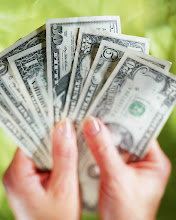When it comes to financial emergencies, experts suggest having at least three months salary saved in the bank and $200 cash available in your home. But let’s face it… most of us aren’t that prepared and getting caught up in a cash crisis can be a stressful time for anyone who doesn’t have a plan in place. Fortunately, there are some easily accessible funding options that can help people get out of debt and get back on track toward financial freedom…even with bad credit.
Traditional bank loans are the most popular choice for those needing to borrow funds, but applying for one can sometimes be a hassle with time wasted on tons of paper work. Bank lending also typically involves larger amounts of money loaned for longer periods of time. Paying off the loan over a longer period means varying interest rates.
Obtaining a credit card can sometimes seem like the easiest option. But beware… every time you apply for a credit card, your credit history is checked and your credit score takes a downturn! The more credit cards you have - the lower your credit rating.
Car title lenders offer a way to borrow cash against the equity in your vehicle. One of the many downsides to this type of lending is that it requires a vehicle that is less than 10 years old, as well as several other items to get started with the loan process. These items include the car title (free of all liens), drivers license, social security card, registration, proof of auto insurance, recent paycheck stub, current utility bills, four references and a spare set of car keys!
Payday loan lending is another option and it is, in my opinion, the least intrusive. It’s perfect for people with bad credit who need cash quick - less than 24 hours in most cases. Payday loan lending consists of small, short term loans and unlike bank loans, payday loans are unsecured, meaning that no collateral is required. A payday loan is typically much faster than a traditional loan, because of the absence of paperwork. With online payday loans, the customer fills out the application online and submits it for approval. Online payday loans offer even more benefits like convenience, privacy and quicker loan decision processing time.
The typical payday loan amount is $100 to $500 (although some lenders do offer loans up to $1500) and it is taken out for a two week period. The usual payday loan fee is $15 per $100. A few payday loan companies offer low introductory rates of around $9 to $10 per $100 borrowed by new customers. Many online payday loan companies do not conduct a detailed credit check, which provides another option for consumers with less than perfect credit. The only paperwork required for most payday loan lenders includes two recent pay stubs for proof of employment and a recent bank statement.
ALWAYS search around for the best rates before applying for any type of loan!
Tuesday, August 19, 2008
Thursday, August 7, 2008
Beat the heat, without beating your bank account
Summertime is synonymous to fun, but one of the not so fun truths about summer is high utility bills. Cranking up the air conditioner and watering your lawn can add up to hundreds of dollars spent each summer. Some of those dollars can be saved with just a few quick adjustments around the house that may seem like obvious cost savers to some, but are often overlooked.
When you leave the house, turn off all of your small appliances. If you cook, be sure to turn the oven off when you’re finished and after leaving a room, switch off the lights. If you’re buying new appliances, be sure you buy ones with the “Energy Star” tag.
Going out of town? Be sure to turn off the cooling system before you leave. Old ideas out there told you that turning your air conditioner on and off can cost more that leaving it on at the highest temperature. But if you’ll be out of town for an extended amount of time, it is very wasteful to leave it running. When you’re simply running out for a quick errand or to work, increase the AC temperature and turn ceiling fans on for added circulation around the house. If it’s cool enough outside to have the windows open, you might think about leaving the fan on all day to help cool the inside and ditch the air conditioner completely.
Make sure the seal on your refrigerator is good and tight. If it isn’t, your refrigerator will be sucking more power to keep the inside temperature cool. Be sure to have your refrigerator in the coolest spot in the kitchen, away from the oven and out of the sun. If you live in a warm climate area, don’t put your refrigerator in the garage, as this could double your energy costs.
Also, turn off your computer when you’re gone. Unless you’re using your computer as a server or you just like having it on when you get home, there’s no point in running it all day long. The typical PC consumes around 300 watts. If you use your computer for about 4 hours a day, then that’s 20 hours of wasted energy if you leave it running all day. If electricity cost 10 cents per kilowatt-hour in your area, then the 20 hours represents 60 cents a day, which adds up to $219 per year.
When you leave the house, turn off all of your small appliances. If you cook, be sure to turn the oven off when you’re finished and after leaving a room, switch off the lights. If you’re buying new appliances, be sure you buy ones with the “Energy Star” tag.
Going out of town? Be sure to turn off the cooling system before you leave. Old ideas out there told you that turning your air conditioner on and off can cost more that leaving it on at the highest temperature. But if you’ll be out of town for an extended amount of time, it is very wasteful to leave it running. When you’re simply running out for a quick errand or to work, increase the AC temperature and turn ceiling fans on for added circulation around the house. If it’s cool enough outside to have the windows open, you might think about leaving the fan on all day to help cool the inside and ditch the air conditioner completely.
Make sure the seal on your refrigerator is good and tight. If it isn’t, your refrigerator will be sucking more power to keep the inside temperature cool. Be sure to have your refrigerator in the coolest spot in the kitchen, away from the oven and out of the sun. If you live in a warm climate area, don’t put your refrigerator in the garage, as this could double your energy costs.
Also, turn off your computer when you’re gone. Unless you’re using your computer as a server or you just like having it on when you get home, there’s no point in running it all day long. The typical PC consumes around 300 watts. If you use your computer for about 4 hours a day, then that’s 20 hours of wasted energy if you leave it running all day. If electricity cost 10 cents per kilowatt-hour in your area, then the 20 hours represents 60 cents a day, which adds up to $219 per year.
Tuesday, August 5, 2008
Never let your finances force you to eat unhealthy food.
Eating healthy should never be a sacrifice, no matter what your financial circumstances may be. Eating from the dollar menu at McDonalds may have been an option for you when you were younger, but better food choices are a must as you begin to approach your 20’s and 30’s. Eating healthy isn’t always the easiest thing to do, and certainly not the cheapest. But, while it can be tough to find better food items for you and your family, there are a few things you can do to give yourself a step up on eating healthier and still save money!
- Try to shop right after eating a meal, in this way, you won’t have that hunger urge while you’re looking for healthy food. Many people have a tendency to want junk food when they’re hungry, instead of the healthy stuff. Reason being - it looks tastier.
- Before heading to the grocery store, plan out a week’s worth of meals. This will give you an idea of what you really need and lower the temptation to browse instead of shop. Research has shown that shoppers who don’t bring a list tend to buy more food, especially of the snacking variety.
- Look for a store’s weekly specials and clip coupons for in-store brands. Generic brands are less expensive and generally have the same nutritional value.
- Try growing your own fruits and veggies or find a local farmer’s market. Their produce should be cheaper and is usually fresh picked straight from the crop.
- Warehouse grocers, like Sam’s Club or Costco, have also started offering healthier, organic choices in bulk – so you pay a lot less.
- Swap out sugary snacks for some baby carrots, raisons, or unsalted nuts. These will fill you up a lot quicker than a Twinkie or a donut.
Subscribe to:
Posts (Atom)






